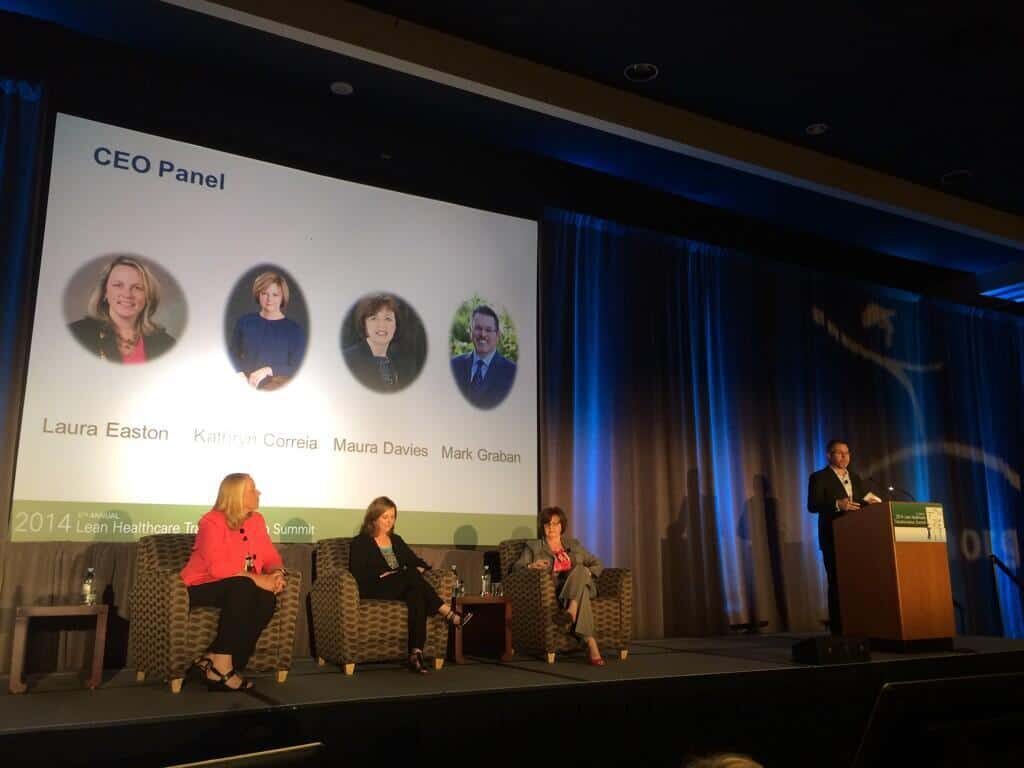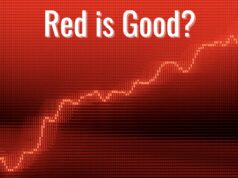 Today is the second and final day of the 5th annual Lean Healthcare Transformation Summit. Follow along on Twitter with hashtag#HCSummit14 to see my tweets and thoughts from others. I will be adding updates to this post during the day, as well. These are not meant to be complete notes or a transcript… but quotable and interesting thoughts or comments from each talk.
Today is the second and final day of the 5th annual Lean Healthcare Transformation Summit. Follow along on Twitter with hashtag#HCSummit14 to see my tweets and thoughts from others. I will be adding updates to this post during the day, as well. These are not meant to be complete notes or a transcript… but quotable and interesting thoughts or comments from each talk.
See yesterday's post about Day One.
James Hereford Keynote
COO of Stanford Health and Clinics – Bio
The fundamental difference between Lean and TQM (or other improvement methods from the past) is not how improvement is done… what's fundamentally different is the management system.
“We don't have the luxury of saying ‘this is a journey' and taking 10 years to get there.”
Healthcare is the most complex operating environment there is. No other industry can claim that title. We are capital intensive, labor intensive, in the service business (with our customer being highly involved in the process), and we're in the knowledge management business. It's a highly regulated and litigious environment. When we make mistakes, it can cost lives. See pic.
Why wasn't Lean management invented here? Nobody was really being that demanding of us on cost, quality, service, etc. These days are changing. We have to be able to change faster.
“Lean is not a program, it is a total strategy” — Taiichi Ohno
We're going to hold the pretense that the people at the top of the pyramid are smartest and are going to make all the decisions in a highly complex environment? That's not going to happen. We have to flip the pyramid upside down.
Three major components of the Lean management system that addresses three key problems we all have
1) How do we align vertically? (Strategy Deployment)
2) How do we develop our skill and knowledge to know exactly what we need to be paying attention to? (Active Daily Management)
3) How do we optimize things horizontally? (Value Stream Management)
“We need to create an environment where we have creative problem solvers throughout our organizations.”
The power of strategy deployment:
Executives MUST participate in a meaningful way
Engages people who are doing the work, identifying ways they can contribute to goals
Creates ownership throughout the organization through “catch ball”
Challenges: Iterations are slow. Catch ball is a sophisticated conversation
A value stream map needs to look at the end-to-end patient experience. Must maintain focus on the patient. Provides context for improvement, so we're not doing random things.
It's easy to be enthralled by RPIWs (kaizen events). “The danger is that we believe that this is the Lean transformation” — also need daily Lean management.
Active Daily Management – five foundational concepts
1) Setting standards
2) Having standard work to achieve that standard
3) Have leader standard work… check and help and problem solve
4) Visual systems to detect abnormal conditions… so everybody can see the problems, near real time
5) Active problem solving to fix abnormal conditions and improve standard work… everybody owns the problem and works on them in a huddle or huddles. The role of the manager is to coach the problem solving (not to solve it themselves)
Why does the Lean management system work? We're building a learning organization. Cites Chris Argyris and Carol Dweck's Mindset. Move away from control and extrinsic awards (see Dan Pink's Drive). Lean creates “bounded autonomy” which increases engagement.
We can't just improve incrementally, we have to TRANSFORM our healthcare organizations quickly.
You don't learn how to play golf by going to watch Tiger Woods.
The Lean community needs to stop complaining about technology and work. as Toyota does, to integrate its power in right way.
CEO Panel
- Maura Davies, President and CEO of the Saskatoon Health Region
- Laura Easton, President and CEO of Caldwell UNC Healthcare
- Kathryn Correia, President and CEO of HealthEast Care System
(notes soon via @MikeLombard)
Laura Easton: 50% of employees engaged in improvement events, 15 MDs out of 100 engaged/year. Smaller system = more nimble. Started with kaizen events, now working on value streams and policy deployment.
Kathryn Correia: not planning to copycat the work done at Thedacare, like collaborative care. Her challenge: get an organization of 7000 people move toward creating more benefit and reducing burden on staff. How does lean become a way to free up capacity so we can do more good?
Maura Davies: Many members of public proud of health system but frustrated w/ issues. Wait times for elective surgery major issue: 15000 pts on wait list for 3 months. Adopted hoshin kanri at provincial level, strategic plan for whole system. Staff complain that supplies are sometimes unavailable after Kanban system was put in. “Did we have supply shortages before Lean? Of course. Now, we are tweaking and adjusting the system so that we'll eliminate that problem.
Some tweets from the CEO panel:
Laura Easton CEO UNC Caldwell – Summarizes their approach .. has clearly adopted lean principles framework as THE way #HCSummit14
— Ken Segel (@ktsegel) June 5, 2014
Maura Davies CEO Saskatchewan: lean=management system forentire provence. Why? Estimated we were causing 1-2 deaths/day. #HCSummit14
— Ken Segel (@ktsegel) June 5, 2014
Transparency is a fundamental principle of #lean. You can't improve what you can't see. CEOs all agree. #HCSummit14
— Bonnie Brossart (She/Her) (@BonnieBrossart) June 5, 2014
https://twitter.com/MikeStoecklein/status/474618977009025024
CEOs in panel #HCSummit14 says transparency as a core value has fostered more willingness in the workforce to be forthright about failures
— Dennis Kendel (@DennisKendel) June 5, 2014
Only two numbers matter in healthcare delivery zero and 100.
Zero harm and 100% compliance to best practice #Maura Davies #HCSummit14— Julie Bartels (@juliebartels) June 5, 2014
It's disrespectful to ask somebody to do a job that's wasteful: Kathryn Correia #HCSummit14
— Bonnie Brossart (She/Her) (@BonnieBrossart) June 5, 2014
Davies: 'learning lean by doing not in addition to my job it is my job'. Nxt week she is 100% on rapid improvement event. #HCSummit14
— Ken Segel (@ktsegel) June 5, 2014
#Lean perspective shared by Maura Davis "How did we put a nurse in a position to harm a patient?' #HCSummit14
— Todd Hudson (@headmaverick) June 5, 2014

John Shook Keynote
“Healthcare needs to be fixed from the inside.”
The state of Lean healthcare per John: picture. “Kamikaze Kaizen” is a term that's critical of random “drive by” Kaizen events that aren't really connected to strategy and/or aren't sustained.
Don't just copy the artifacts and solutions we see elsewhere… maybe we are wired this way. But we need to understand the question that led to the answer or method.
When people say things like “oh just use Lean or whatever different tools you want,” they're not thinking of Lean the same way we do (it's really about a management system and philosophy, not just tools).
Five Lean transformation questions — see post and video — picture
“A roadmap will only take you where somebody else has gone before. But every transformation is different.” A compass (a true north) can be more helpful than a map for your own journey.
https://twitter.com/davies_maura/status/474676013230985218
How we design the work really influences people's attitudes, morale, etc.
How do we improve the work AND develop capabilities?
The process of doing the work is INTEGRATED within the process of improving the work.
“Lean is eminently practical.”
“In a Lean system, team members must think. Through thinking, team members grow and become better team members and people.”
“No problem is a problem” — how to see problems, how to stop hiding them, how to get them out? “Hiding problems is the worst illness for any organization.”
Are we “implementing” or “experimenting?” Focused on an outcome or on learning?
We need to teach people to find problems, give them permission to fail, but the ability to succeed in solving them.
Change the leader's role from “How can you get others to do something” (the only one you can change is yourself).
All Lean change requires: 1) Intention (a decision) 2) Process (a means, a routine, a kata) 3) Practice (deliberate practice with a coach).
Lean management is less about knowing the right answers and more about asking smarter questions. #JohnShook #HCSummit14
— Julie Bartels (@juliebartels) June 5, 2014
Thanks for reading! I hope to see you at the Summit next year in 2015.
Please scroll down (or click) to post a comment. Connect with me on LinkedIn.
Let’s work together to build a culture of continuous improvement and psychological safety. If you're a leader looking to create lasting change—not just projects—I help organizations:
- Engage people at all levels in sustainable improvement
- Shift from fear of mistakes to learning from them
- Apply Lean thinking in practical, people-centered ways
Interested in coaching or a keynote talk? Let’s start a conversation.








![What’s Your Organization’s Real Mistake Policy? [Poll]](https://www.leanblog.org/wp-content/uploads/2025/07/Lean-Blog-Post-Cover-Image-2025-07-17T085114.134-100x75.jpg)
